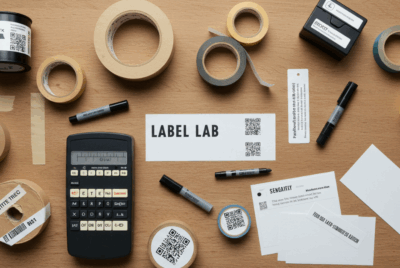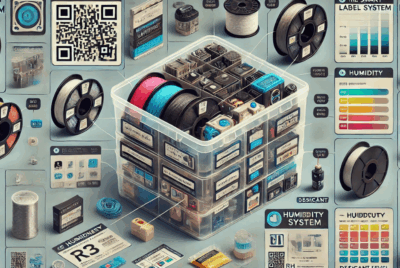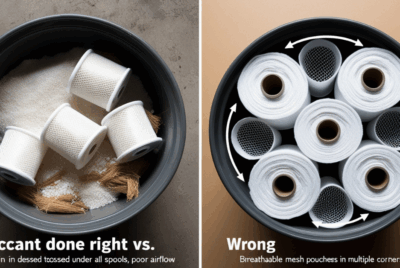9 Warning Signs Your 3D Filament Storage Setup Isn’t Working
1. Is Your Filament Turning Against You?
If your prints have been acting strange lately—stringy, brittle, or just plain ugly—it might not be your printer… it might be your filament storage setup.
Let’s dive into the 9 biggest signs that your setup isn’t protecting your spools the way it should.
2. Why Bad Storage = Bad Prints
Your filament is like a sponge for moisture. If it’s not kept dry, it absorbs water from the air—silently ruining itself before it ever touches the nozzle.
Once filament gets wet, expect:
- Warping
- Weak layers
- Inconsistent extrusion
- Failures that seem “random,” but aren’t
3. Sign #1: You Hear Popping or Hissing While Printing
That sound? It’s not normal.
It means water inside your filament is turning to steam.
Steam bubbles create micro-explosions in the hot end—leading to gaps and sputtering in your prints.
✅ Fix:
- Dry your filament immediately
- Check your humidity levels
- Improve container seals
4. Sign #2: Surface Quality Looks Rough or Bubbled
Even with perfect print settings, your model looks… off.
That’s because moisture causes uneven extrusion and tiny bubbles on the print surface. It’s especially obvious on glossy filaments like PETG or smooth PLA.
5. Sign #3: Prints Are Weak and Layers Aren’t Bonding
Filament that’s been exposed to humidity becomes chemically compromised, resulting in:
- Poor layer adhesion
- Crumbly edges
- Weak structural parts
Even if your print looks okay, it might snap under light stress.
6. Sign #4: Your Filament Feels Brittle or Snaps Easily
Try unspooling a few feet and giving it a gentle bend.
- Does it snap with little pressure?
- Does it feel unusually dry or stiff?
That’s a sign your filament is too old or has absorbed too much moisture.
7. Sign #5: Your Spools Show Visible Moisture Damage
Look for:
- White, chalky residue
- Pitted or bubbled filament surface
- Unspooling that tangles or drags unevenly
These are all indicators that your spool was exposed to high humidity or temperature swings.
8. Sign #6: Hygrometer Is Reading High Humidity
You’re using a sealed bin—but the humidity inside keeps climbing.
That means:
- Your container isn’t airtight
- Silica packs are exhausted
- There’s a leak in the seal or lid
- Or your filament was stored wet to begin with
✅ Fix:
- Replace desiccants
- Re-seal all lids
- Store only dried filament
9. Sign #7: You Keep Getting Stringing or Blobs
If you’ve already dialed in your retraction settings, but still see:
- Stringy spiderwebs
- Tiny zits or blobs on the model
…then your filament is likely releasing steam as it extrudes. Yep—moisture again.
10. Sign #8: Silica Gel Packs Are Always Saturated
If your desiccant packs change color fast or never return to dry, your storage environment is constantly letting moisture in.
This is a clear sign your bin, bag, or dryer isn’t sealed properly.
✅ Fix:
- Replace with better-sealing containers
- Recharge silica packs more often
- Add humidity sensors to monitor in real time
11. Sign #9: You’re Redrying Filament Too Often
If you find yourself drying spools every time you print, your storage isn’t doing its job.
Filament should stay dry for weeks or months in a proper setup.
Redrying constantly means:
- Your bins are too leaky
- You’re opening containers too often
- You’re not sealing things correctly
12. What Happens If You Ignore These Signs?
Ignoring poor storage leads to:
- Unreliable prints
- Frustration with your printer
- Wasted filament and time
- Poor layer adhesion = fragile parts
- Damage to your nozzle from burned, wet plastic
13. How to Troubleshoot a Failing Storage Setup
Ask yourself:
- Is my bin truly airtight (gasket-sealed)?
- Are my desiccant packs still working?
- Did I dry this spool before storing it?
- Am I using a humidity gauge to monitor RH?
14. Simple Fixes for Common Storage Problems
| Problem | Fix |
|---|---|
| Noisy or bubbly prints | Dry filament + check RH levels |
| Brittle or snapping spools | Use dryer or dry box before printing |
| High humidity in bin | Replace or recharge desiccant + reseal |
| Constant redrying | Upgrade to better containers + vacuum bags |
| Inconsistent print quality | Test and re-dry filament before each job |
15. Final Thoughts: Don’t Let Poor Storage Ruin Great Filament
- Your printer is only as good as the material you feed it.
- And even the best filament turns into junk if it’s stored wrong.
- Keep your storage airtight, dry, and organized.
- Monitor humidity, rotate your spools, and dry them before sealing.
- You don’t need a fancy system—you just need a functioning one.
❓FAQs
- What’s the ideal humidity for storing filament?
Under 40% RH for most types. Nylon and PVA prefer under 20%. - Can I reuse filament that shows signs of moisture damage?
Yes, if you dry it thoroughly. But it may not print perfectly. - Is it okay to store filament in the garage?
Only if it’s insulated, sealed, and kept cool. Otherwise, no. - How often should I check humidity in my storage?
At least once a month—or weekly if you live in a humid climate. - Should I always dry filament before storing it?
Yes. Store it dry, or you’re locking in the problem.




